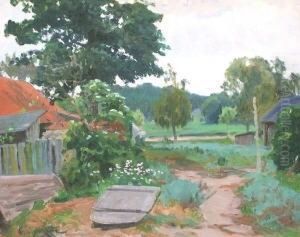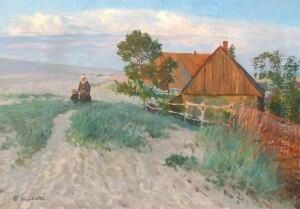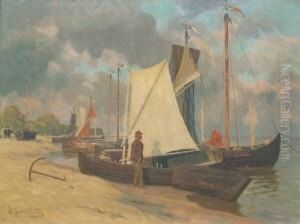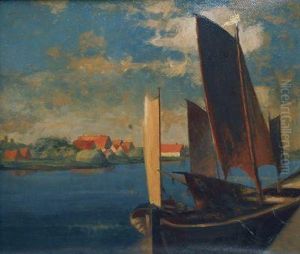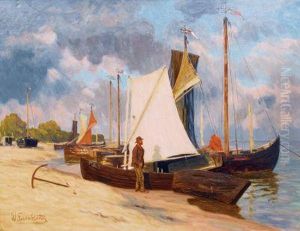Wilhelm Eisenblatter Paintings
Wilhelm Eisenblätter was a German painter and graphic artist, born in 1862 in Magdeburg, Germany. Eisenblätter's artistic journey began in his hometown, where he first developed an interest in art. He later moved to Berlin to further his education and immerse himself in the vibrant art scene of the German capital. Eisenblätter was primarily known for his detailed etchings and woodcuts, which often depicted landscapes, urban scenes, and social commentaries of his time. His work is characterized by a meticulous attention to detail and a distinctive style that blends realism with a sense of romanticism.
Eisenblätter's career spanned several decades, during which he witnessed significant historical events and changes in the art world. He was part of the broader movement of German art at the turn of the 20th century, which was marked by a shift towards more expressive forms of representation and an exploration of national identity through art. Eisenblätter's contributions to this movement were notable for their technical skill and the way he captured the essence of German culture and landscapes. Despite the tumultuous times, including two World Wars, his work remained focused on the beauty and intricacy of everyday scenes, rather than overtly political themes.
Throughout his lifetime, Wilhelm Eisenblätter received various accolades for his contributions to German art. His works were exhibited in numerous galleries across Germany and beyond, earning him a reputation as a skilled etcher and woodcut artist. Eisenblätter's legacy is preserved through his artworks, which continue to be studied and admired for their craftsmanship and unique perspective on early 20th-century Germany. He passed away in 1942, leaving behind a body of work that remains influential in the realms of etching and woodcut art. Eisenblätter's dedication to his craft and his ability to capture the spirit of his time make him a significant figure in the history of German art.
